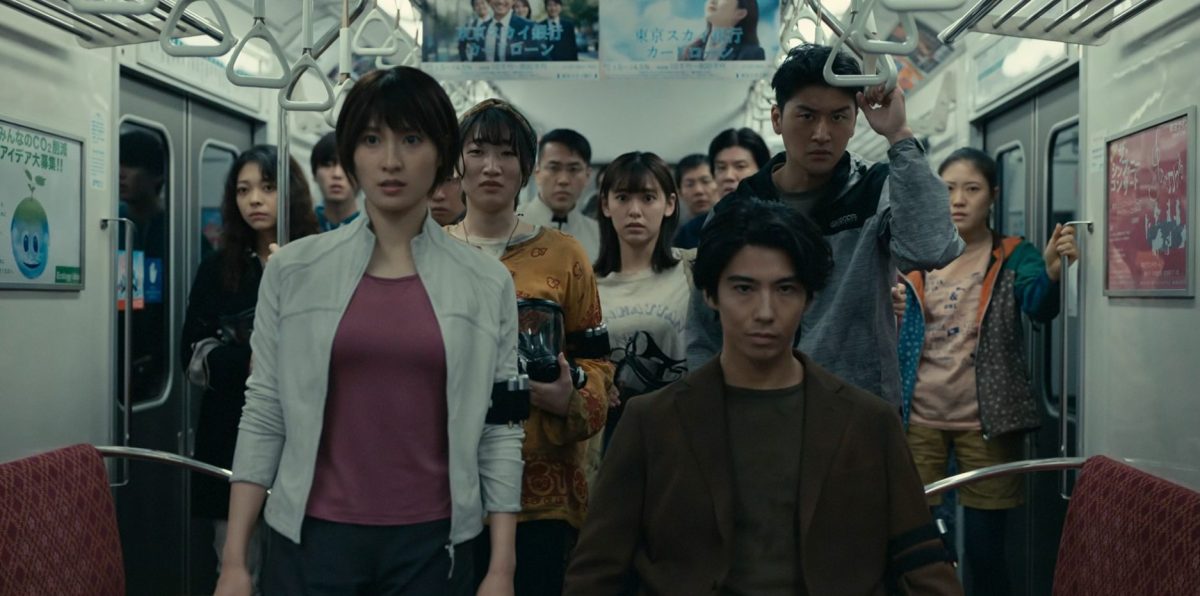Alice in Borderland Season 3 on Netflix takes the survival thriller genre to staggering new heights, plunging Arisu and Usagi—and by extension, the audience—back into a twisted, deadly alternate reality just as they seem poised for their happily-ever-after. This season opens with a sense of calm and resolution—a time jump reveals Arisu and Usagi together, healing and building a quiet life after surviving Borderland’s historic games. However, grief over past losses and unresolved trauma refuse to let them rest, eventually drawing them back onto the gameboard, where fate, memory, and mortality intertwine in even graver ways.
The Borderlands are more brutal than ever, with the stakes raised both emotionally and philosophically. The show thoughtfully probes the meaning of existence, love, and the randomness of life and death, echoing its inspirations from Lewis Carroll and Japanese existential fiction. Relationships are tested, alliances shattered, and new global threats loom—especially as the finale hints at an expansion far beyond Japan. With electrifying pace, stunning visuals, and unflinching narrative risks, Season 3 stands as both a summation and a reinvention of the Alice in Borderland mythos.
Alice in Borderland (Season 3) ‘Netflix’ Recap:
What Has Become of Arisu and Usagi After the Games?
Season 3 begins with a striking time jump: Arisu and Usagi are finally together, navigating regular life after surviving the brutal face card games that defined Borderland. Arisu works as a counselor, helping others heal, while Usagi finds solace in consulting, but both carry the scars of their past. Grief, especially Usagi’s anguish over her father’s death, lingers beneath the surface—making her vulnerable to those who wish to exploit the trauma for their own ends.
How Are Players Forced Back Into the Borderlands?
The specter of Borderland’s death games returns with the manipulations of two pivotal antagonists: Banda (a player who chose to remain in Borderland) and Ryuji, a scholar obsessed with proving the existence of an afterlife. Banda’s plan is to drive Arisu back into the games by exploiting Usagi’s pain, using Ryuji as his pawn. Ryuji kidnaps Usagi and returns her to Borderland, setting in motion a series of challenges that will force Arisu to risk everything—and potentially trap him there as a permanent resident.
What Are the New Games Like?
Season 3 introduces games of unprecedented intensity—each one engineered to not only test the intellect and courage of the players, but also to prey on their deepest anxieties. From psychological puzzles involving doors of fate and wristbands to loss-driven challenges reminiscent of ‘Old Maid’ and complex group betrayals, the games exploit not just physical stamina but spiritual resilience. New players, like Rei and Matsuyama (who works with Borderland authorities), expand the dynamics, while Ann—Arisu’s medical examiner friend—helps him return in pursuit of Usagi.
Are Alliances or Friendships Still Possible?
Though the new Borderlands are more unpredictable and cutthroat, Season 3 is rich with emotional reunions and nostalgia. Arisu meets former allies and rivals like Chishiya, Kuina, Niragi, Aguni, and Ann, each grappling with their own reasons to live amid impossible odds. These interactions add emotional depth and continuity, highlighting the series’ enduring themes of trust, loss, and human connection.
Who Is Banda, and What Is His Ultimate Plan?
Banda seeks ultimate chaos and power within the Borderlands. By orchestrating Usagi’s kidnapping and Ryuji’s manipulation, he hopes to make Arisu a fellow citizen—an endlessly fascinating adversary who would keep the games entertaining forever. His machinations are matched only by Ryuji’s personal obsession with the afterlife, which as the season unfolds, proves both tragic and redemptive.
Can Ryuji Truly Sacrifice Innocence for Knowledge?
Ryuji’s tragic past includes a failed experiment with a student who never woke up—an event fueling his desperate drive to unlock the Borderlands’ secrets. Twice, he has the opportunity to kill Usagi to achieve this goal but ultimately chooses compassion, haunted by his own guilt and the moral cost of crossing that line. This emotional arc brings a complex human dimension to the season’s antagonists, setting Borderland apart from other survival thrillers.
How Do Arisu and Usagi Overcome the Final Challenges?
Through harrowing teamwork and revelations (including the symbolic wristband for Usagi’s unborn child, now a key to strategic survival), most of Arisu’s group reach the final roll after several are lost to the twisted system. Arisu, in a self-sacrificial moment mirroring his own journey through grief, chooses to stay behind in Borderland, allowing Usagi and the others to escape. This act cements his role as the “Alice”—a guide for others, embracing the unknown to preserve hope.

Alice in Borderland (Season 3) ‘Netflix’ Ending Explained –
Are Arisu and Usagi Finally Free?
After defying Banda’s plans and saving Usagi, Arisu and Usagi return to the real world, hopeful for a future together—a resolution that feels both earned and deeply poignant, especially as Usagi finally overcomes her grief. The show delivers emotional closure on their arcs, suggesting their journey in Borderland may at last be complete.
What Is the Joker Card, and What Does It Symbolize?
The much-teased ‘Joker’ card, introduced in the finale, is not the omnipotent villain fans theorized, but rather a philosophical gatekeeper between life and death—a metaphor for randomness, fate, and the illusion of control. The Man in the Hat (suspected to be Joker) explains that the deck’s cards mirror the calendar (with Jokers representing the uncertainties and leaps in life), subverting expectations that any one force rules the Borderlands. This revelation reframes Borderland not as a place meticulously governed, but one defined by chaos and chance.
Is This Really the End of the Borderlands? What about the Global Disaster?
Just as Arisu and Usagi settle into their new life, earthquakes and tectonic shifts shake Japan and the world—a looming signal that events will soon send many new souls into Borderland. In a gripping final scene, the camera shifts to an American diner, revealing a waitress named “Alice.” This suggests the Borderlands’ deadly games and philosophical puzzles are about to expand globally, likely with new protagonists and even higher stakes in a potential Season 4.
What Happens to the Returning Characters?
The sequence where Arisu works as a counselor features appearances from longtime allies and adversaries—Chishiya, Kuina, Aguni, Ann, Niragi—serving as both a nostalgic callback and a celebration of how much the series’ ensemble has grown. These moments tie together several seasons’ worth of heartbreak and triumph, offering the audience emotional closure even as the future remains unwritten.
Key Themes and Final Thoughts
-
Chaos and Control: The Joker card’s symbolism unpacks the show’s deepest theme—the role of fate, free will, and contingency in existential crises.
-
Grief and Growth: Usagi’s victory over her sorrow and Arisu’s acceptance of the necessary unknowns show how pain ultimately drives both survival and transformation.
-
Global Expansion: The final hints suggest Borderland’s torments and revelations may one day include far-flung locations and international characters, expanding the series well beyond its Japanese roots.
With masterful plotting and bracing, immersive games, Alice in Borderland Season 3 closes one chapter and cracks open a vast future—leaving both its survivors and audience bracing for whatever wild possibilities the next Borderlands might hold.






![NET [2021] Review – A Black Mirror-ish Attempt, Marred by Its Own Clunky Execution](https://79468c92.delivery.rocketcdn.me/wp-content/uploads/2021/09/NET-ZEE5-1-768x479.jpg)
